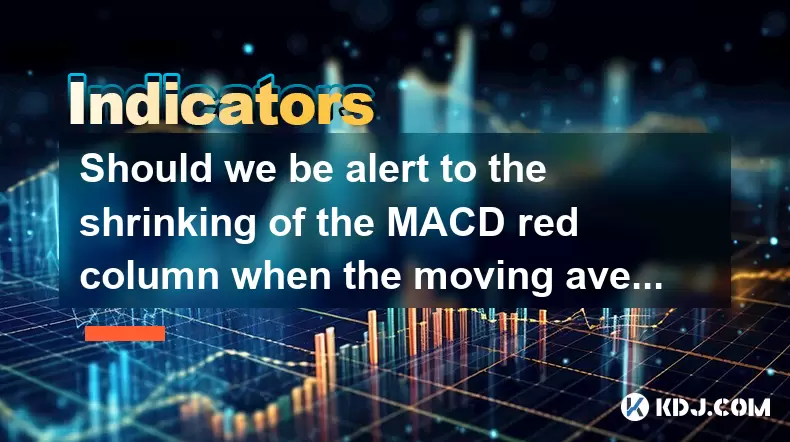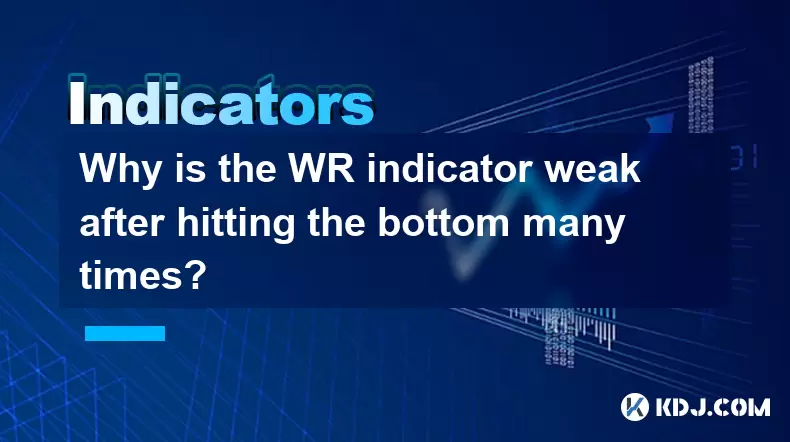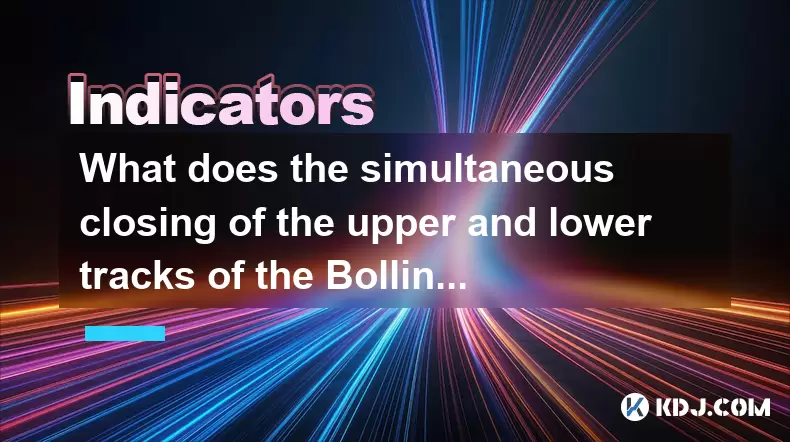-
 Bitcoin
Bitcoin $101,898.5005
-0.75% -
 Ethereum
Ethereum $2,258.1125
-1.07% -
 Tether USDt
Tether USDt $1.0004
0.01% -
 XRP
XRP $2.0178
-2.93% -
 BNB
BNB $624.0243
-1.53% -
 Solana
Solana $134.3298
-0.90% -
 USDC
USDC $0.9999
0.01% -
 TRON
TRON $0.2675
-2.05% -
 Dogecoin
Dogecoin $0.1538
-1.96% -
 Cardano
Cardano $0.5482
-1.11% -
 Hyperliquid
Hyperliquid $35.5636
5.45% -
 Bitcoin Cash
Bitcoin Cash $453.4902
-1.66% -
 Sui
Sui $2.5134
-2.97% -
 UNUS SED LEO
UNUS SED LEO $9.1292
1.77% -
 Chainlink
Chainlink $11.8457
-1.60% -
 Stellar
Stellar $0.2312
-2.73% -
 Avalanche
Avalanche $16.9721
0.29% -
 Toncoin
Toncoin $2.7549
-3.82% -
 Shiba Inu
Shiba Inu $0.0...01081
-1.10% -
 Litecoin
Litecoin $80.8250
-0.71% -
 Hedera
Hedera $0.1374
0.21% -
 Monero
Monero $305.4827
-2.36% -
 Ethena USDe
Ethena USDe $1.0006
0.00% -
 Dai
Dai $1.0000
-0.01% -
 Polkadot
Polkadot $3.2085
-3.12% -
 Bitget Token
Bitget Token $4.0845
-3.13% -
 Uniswap
Uniswap $6.3353
-1.63% -
 Pi
Pi $0.5085
-0.70% -
 Pepe
Pepe $0.0...08913
-3.82% -
 Aave
Aave $232.7090
-0.58%
Is it effective for Vol to fall back to the support level with a small volume? Can I add to my position?
Adding to your position at a support level with small volume can be risky; always assess market sentiment and use technical indicators before deciding.
May 23, 2025 at 05:00 pm

Is it Effective for Vol to Fall Back to the Support Level with a Small Volume? Can I Add to My Position?
In the world of cryptocurrency trading, understanding the behavior of volume (Vol) and its relationship with support levels is crucial for making informed trading decisions. One common scenario that traders often face is whether it is effective for volume to fall back to the support level with a small volume, and if this situation presents an opportunity to add to their positions. Let's delve into this topic to understand the dynamics at play and explore the potential strategies.
Understanding Volume and Support Levels
Volume is a key indicator in cryptocurrency trading that represents the number of coins or tokens traded within a given period. It provides insights into the strength behind price movements. A support level, on the other hand, is a price level at which a downtrend can be expected to pause due to a concentration of demand. When the price of a cryptocurrency approaches this level, it often attracts buyers who see it as a good entry point.
The Scenario: Volume Falling Back to Support with Small Volume
When the volume falls back to a support level with a small volume, it indicates that there is less trading activity as the price approaches the support. This can be interpreted in several ways, depending on the broader market context and the specific cryptocurrency in question.
- Low Volume at Support: If the volume is low as the price approaches the support level, it might suggest that the market lacks conviction in the support level's strength. Traders might be hesitant to buy, fearing that the support could break, leading to further price declines.
- Potential for False Breakouts: A small volume at the support level can also lead to false breakouts, where the price briefly dips below the support but quickly recovers. This can trap traders who shorted the cryptocurrency, expecting a more significant drop.
Effectiveness of Small Volume at Support
The effectiveness of volume falling back to the support level with a small volume depends on various factors, including the overall market sentiment, the cryptocurrency's historical price behavior, and the presence of other technical indicators.
- Market Sentiment: If the broader market sentiment is bearish, a small volume at the support level might indicate that the support is weak and could be broken easily. Conversely, in a bullish market, even a small volume might be enough to hold the support if there is strong underlying demand.
- Historical Price Behavior: Analyzing the cryptocurrency's past performance at similar support levels can provide insights into how effective a small volume might be. If the cryptocurrency has historically bounced back from the support level even with low volume, it might suggest that the support is robust.
- Technical Indicators: Other technical indicators, such as the Relative Strength Index (RSI) or Moving Averages, can provide additional context. For instance, if the RSI is not in oversold territory despite the price being at support, it might suggest that the price could continue to fall.
Deciding Whether to Add to Your Position
When considering whether to add to your position when volume falls back to the support level with a small volume, it is essential to conduct a thorough analysis and consider the following steps:
- Assess the Market Context: Look at the overall market sentiment and the performance of other cryptocurrencies. If the market is generally bearish, it might be riskier to add to your position.
- Review Historical Data: Check the cryptocurrency's historical behavior at similar support levels. If it has shown resilience in the past, it might be a safer bet.
- Use Technical Indicators: Combine the analysis of volume and support with other technical indicators. For example, if the Moving Average Convergence Divergence (MACD) shows a bullish divergence, it might support the decision to add to your position.
- Consider Risk Management: Always consider your risk tolerance and set stop-loss orders to protect your investment. Adding to your position increases your exposure, so ensure you have a clear exit strategy.
Practical Steps to Add to Your Position
If, after thorough analysis, you decide to add to your position, follow these detailed steps:
- Open Your Trading Platform: Log into your preferred cryptocurrency trading platform.
- Navigate to the Cryptocurrency: Find the cryptocurrency you wish to add to your position.
- Check the Current Price: Ensure the price is still at the support level before making your move.
- Place Your Order: Decide on the type of order you want to place. For adding to your position, a limit order at the support level might be effective. This ensures you buy at the desired price.
- Set the Limit Price: Enter the price at which you want to buy the cryptocurrency, ideally at or slightly above the support level.
- Set the Quantity: Determine how much of the cryptocurrency you want to buy, keeping in mind your overall investment strategy and risk management.
- Review and Confirm: Double-check all details, including the price, quantity, and any fees associated with the trade. Once satisfied, confirm the order.
- Monitor Your Position: After adding to your position, keep a close eye on the price movement and be ready to adjust your strategy if necessary.
Potential Risks and Considerations
While adding to your position at a support level with small volume can be tempting, it comes with inherent risks that you should be aware of:
- Support Level Break: If the support level breaks, the price could decline further, leading to potential losses.
- Liquidity Issues: Low volume can lead to liquidity issues, making it harder to enter or exit positions at desired prices.
- False Signals: Relying solely on volume and support levels without considering other factors can lead to false signals and poor trading decisions.
FAQs
Q: How can I identify a strong support level in a cryptocurrency?
A: To identify a strong support level, look for areas where the price has historically bounced back multiple times. Use technical analysis tools like trendlines, moving averages, and volume profiles to confirm the strength of the support. Additionally, consider the psychological levels (round numbers) that traders often watch.
Q: What other indicators should I use alongside volume to make better trading decisions?
A: In addition to volume, consider using indicators like the Relative Strength Index (RSI) to gauge overbought or oversold conditions, the Moving Average Convergence Divergence (MACD) to identify trend changes, and Bollinger Bands to assess volatility and potential price breakouts.
Q: Can adding to my position at a support level with small volume lead to significant gains?
A: While it is possible to achieve significant gains, it is also risky. Adding to your position at a support level with small volume can lead to gains if the price bounces back strongly. However, if the support level breaks, you could face significant losses. Always consider your risk tolerance and use proper risk management techniques.
Q: How often should I monitor my position after adding to it at a support level?
A: It is advisable to monitor your position regularly, especially in the volatile cryptocurrency market. Depending on your trading strategy, you might want to check your position multiple times a day or set alerts for specific price levels to stay informed about any significant movements.
Disclaimer:info@kdj.com
The information provided is not trading advice. kdj.com does not assume any responsibility for any investments made based on the information provided in this article. Cryptocurrencies are highly volatile and it is highly recommended that you invest with caution after thorough research!
If you believe that the content used on this website infringes your copyright, please contact us immediately (info@kdj.com) and we will delete it promptly.
- DOGE Recovery Amid US-Iran Tensions: A Market Rollercoaster
- 2025-06-23 20:45:13
- Fiserv, PayPal, and Stablecoins: A New Era of Interoperability?
- 2025-06-23 20:45:13
- Shytoshi Kusama, SHIB Dev, and Alpha Layer: Decoding the Latest Developments
- 2025-06-23 20:25:12
- BTC, ETH, and Institutional Buying: Smart Money Piling In?
- 2025-06-23 20:25:12
- Sonic Boom or Market Gloom? Navigating Volatility with Sonic, SPX6900, and Crypto
- 2025-06-23 20:55:12
- Shakespeare Coin for Sale: Rare Find or Fool's Gold?
- 2025-06-23 20:55:12
Related knowledge

Does the second golden cross of MACD above the zero axis represent the continuation of strength?
Jun 23,2025 at 08:21pm
Understanding the MACD IndicatorThe Moving Average Convergence Divergence (MACD) is a widely used technical analysis tool in cryptocurrency trading. It consists of three main components: the MACD line, the signal line, and the histogram. The MACD line is calculated by subtracting the 26-period Exponential Moving Average (EMA) from the 12-period EMA. The...

Is it effective when the DIF line suddenly crosses the zero axis when the volume is shrinking and the market is trading sideways?
Jun 23,2025 at 07:29pm
Understanding the DIF Line in Technical AnalysisThe DIF line, or the Difference Line, is a critical component of the MACD (Moving Average Convergence Divergence) indicator, widely used in technical analysis across cryptocurrency and traditional financial markets. It represents the difference between the 12-period EMA (Exponential Moving Average) and the...

Should we be alert to the shrinking of the MACD red column when the moving average is arranged in a bullish pattern?
Jun 23,2025 at 08:14pm
Understanding the MACD Red Column and Its SignificanceThe Moving Average Convergence Divergence (MACD) is a widely used technical indicator in cryptocurrency trading. It consists of three main components: the MACD line, the signal line, and the MACD histogram (the red column). The red column represents the difference between the MACD line and the signal...

Why is the WR indicator weak after hitting the bottom many times?
Jun 23,2025 at 07:56pm
Understanding the WR Indicator in Cryptocurrency TradingThe Williams %R (WR) indicator is a momentum oscillator used by traders to identify overbought and oversold levels in the market. It ranges from 0 to -100, with readings above -20 considered overbought and below -80 considered oversold. In the context of cryptocurrency trading, where volatility is ...

Is the shrinking cross star after the historical high a signal of topping?
Jun 23,2025 at 05:56pm
Understanding the Shrinking Cross Star PatternIn technical analysis, candlestick patterns are essential tools for traders to predict potential price movements. One such pattern is the shrinking cross star, which appears as a small-bodied candle with long upper and lower shadows, indicating indecision in the market. When this pattern forms after an asset...

What does the simultaneous closing of the upper and lower tracks of the Bollinger Bands indicate?
Jun 23,2025 at 09:01pm
Understanding Bollinger Bands in Cryptocurrency TradingBollinger Bands are a widely used technical analysis tool in cryptocurrency trading. Developed by John Bollinger, this indicator consists of three lines: the middle band is typically a 20-period simple moving average (SMA), while the upper and lower bands represent two standard deviations above and ...

Does the second golden cross of MACD above the zero axis represent the continuation of strength?
Jun 23,2025 at 08:21pm
Understanding the MACD IndicatorThe Moving Average Convergence Divergence (MACD) is a widely used technical analysis tool in cryptocurrency trading. It consists of three main components: the MACD line, the signal line, and the histogram. The MACD line is calculated by subtracting the 26-period Exponential Moving Average (EMA) from the 12-period EMA. The...

Is it effective when the DIF line suddenly crosses the zero axis when the volume is shrinking and the market is trading sideways?
Jun 23,2025 at 07:29pm
Understanding the DIF Line in Technical AnalysisThe DIF line, or the Difference Line, is a critical component of the MACD (Moving Average Convergence Divergence) indicator, widely used in technical analysis across cryptocurrency and traditional financial markets. It represents the difference between the 12-period EMA (Exponential Moving Average) and the...

Should we be alert to the shrinking of the MACD red column when the moving average is arranged in a bullish pattern?
Jun 23,2025 at 08:14pm
Understanding the MACD Red Column and Its SignificanceThe Moving Average Convergence Divergence (MACD) is a widely used technical indicator in cryptocurrency trading. It consists of three main components: the MACD line, the signal line, and the MACD histogram (the red column). The red column represents the difference between the MACD line and the signal...

Why is the WR indicator weak after hitting the bottom many times?
Jun 23,2025 at 07:56pm
Understanding the WR Indicator in Cryptocurrency TradingThe Williams %R (WR) indicator is a momentum oscillator used by traders to identify overbought and oversold levels in the market. It ranges from 0 to -100, with readings above -20 considered overbought and below -80 considered oversold. In the context of cryptocurrency trading, where volatility is ...

Is the shrinking cross star after the historical high a signal of topping?
Jun 23,2025 at 05:56pm
Understanding the Shrinking Cross Star PatternIn technical analysis, candlestick patterns are essential tools for traders to predict potential price movements. One such pattern is the shrinking cross star, which appears as a small-bodied candle with long upper and lower shadows, indicating indecision in the market. When this pattern forms after an asset...

What does the simultaneous closing of the upper and lower tracks of the Bollinger Bands indicate?
Jun 23,2025 at 09:01pm
Understanding Bollinger Bands in Cryptocurrency TradingBollinger Bands are a widely used technical analysis tool in cryptocurrency trading. Developed by John Bollinger, this indicator consists of three lines: the middle band is typically a 20-period simple moving average (SMA), while the upper and lower bands represent two standard deviations above and ...
See all articles
























































































